
The Kona Coffee Belt
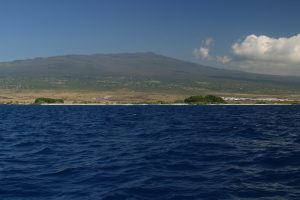



A Kona coffee blend may not mean what you think it might mean.
Do you think it’s a melange of beans from Kona? You’d be wrong, In this case, a Kona coffee “blend” is a coffee made up from other regions — and the lowest quantity might be Kona coffee. These other coffees in a blend are often from plantations far from Kona, or even Hawaii, for that matter.
The minimal amount of Kona Coffee is added to satisfy labeling requirements. In many cases, these blends take away from the enjoyment of drinking a pure cup of Kona coffee. Also, they may use substandard beans.
Kona coffee is one of the most expensive coffees available. Raw coffee bean — or green coffee beans — are often six times more expensive than other kinds of beans. A Kona coffee blend is a way for big coffee makers to capitalize on the Kona coffee name for cheap.
A Kona coffee blend takes away from the taste of what little Kona coffee is in the bag. Common Brazilian and Columbian coffee varieties make up 90 percent of the bag of a blend. Actual amount of Kona coffee? Ten percent.
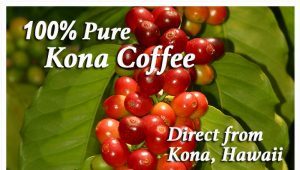
In an attempt to safeguard their name, Kona coffee farmers have sued companies claiming to sell Kona coffee. They’ve also sought out federal protection of the Kona name, but larger coffee manufacturers have thwarted those efforts.
In response, Kona coffee farmers banded together to form trade organizations like the Kona Coffee Council. The primary mission of these groups is to ensure consumers buy real Kona coffee. In addition, they educate coffee drinkers at trade shows. These shows familiarize the world with the unique taste of Kona coffee.
Kona also is host to the Kona Coffee Cultural Festival, a 10-day event held in November to celebrate Hawaii’s favorite crop. Events include art exhibits, coffee farm tours, parades , coffee picking, cupping competitions as well the crowning of Miss Kona Coffee.
Avoid “blends” if you want to experience real Kona coffee. Seek out and buy nothing less than 100 percent pure Kona coffee.

“I have measured out my life with coffee spoons.” -T.S. Eliot
Kona Coffee Farms


Store your coffee in the bag it arrives in. Your Kona Coffee arrives packed in a one-way valved bag. This valve is specially designed to let the natural gasses of your fresh roasted coffee escape, while not letting oxygen in.
Continue reading How to store Kona Beans – extend the shelf life

There’s nothing like visiting Kona coffee farms if you’re looking for a complete coffee experience when you visit Hawaii. Unless you’ve flown direct to Kona, you’ll probably have to take an interisland flight to the Big Island of Hawaii. The Kona International Airport is located outside the town at Keahole Point. If you’re in Hilo, you can drive to Kona, but it takes about two and half hours (one way) to get there on the old scenic roads.
Continue reading Kona Coffee Farms in the State of Hawaii

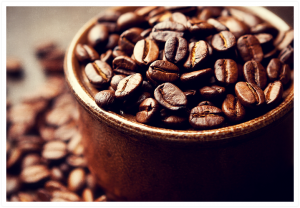
Roasting Kona Coffee heats the green beans to a desired taste and doneness. The length of time in the roaster varies from approximately 12 to 18 minutes. Time and temperature vary depending on the desired results. Coffee roasting is an art and a science that requires creativity, skill and quality equipment. A great roast master is able to combine scientific analysis, technical ability and art to create the perfect roast profile.
Continue reading Roasting Kona Coffee Beans – Learn all about roasting

The first settlements in Hawaii appeared around 300-600 A.D. The first people to reach Hawaii were Polynesians who came to the island from the Marquesas Islands. These settlers built their homes near the ocean and started farming, providing food for themselves while on the island. These first settlers have lived on the island hundreds of years until the next group of settlers arrived, also Polynesians, but from Tahiti. The Tahitians did not want to co-exist along with the Polynesian farmers, so they exiled them to the mountains. Tahitians lived on the Hawaiian Islands until James Cook and his crew arrived in the late 1700s.

While on Hawaiian Islands, the Polynesians were providing for themselves through farming and fishing. They did not arrive at the island empty-handed; on the ships, they brought their native seeds and plants, like taro and sugar cane, along with animals, including pigs and chickens. Since the first settlements, the agricultural tradition continued with Hawaiians for a long time. During the King’s rule, the islands were divided into several regions, or ahupua’a, with chieftains in charge and their people, farmers and fishermen. The King divided the land in such way that each region had zones with mountaintops, shoreline, and the farming area in between. Fishermen took their places on the shores, in specific areas. Ahupua’a system also promoted trading between the lands to make sure all of them prosper.

Besides the plants and animals native to their homeland, the first settlers from Polynesia brought their traditions, crafts, and religious beliefs. Consequently, Polynesian ancestry influenced Hawaiian native customs and traditions. However, Hawaiians perfected and refined the cultural aspects of Polynesian traditions. One of the examples is the clothing that Hawaiian settlers were making. While they used the same material, kapa, for their clothing, Hawaiians were more creative with the material than their ancestors. They used pigments from vegetables to dye their clothes in different colors. Moreover, they used flowers to make the clothes fragrant. They also stamped their clothing with bamboo to create patterns. Among other cultural aspects are physical and recreational activities. Hawaiians had competitions with neighboring lands in athletics, swimming, and games.
Hawaiians do their best to preserve their cultural heritage. Many natives participate in the arts and crafts dating back to their early ancestors. The people of Hawaii have a very close connection to nature, and it is perhaps the reason why they have a tight connection with the traditions of their ancestors. The Hawaiians are very kind and hospitable. Their culture is known for its welcoming and inviting spirit. Hawaiian unique greeting “Aloha” expresses their spirit of goodness and harmony. Ordinarily, sources sometimes refer to it as “the spirit of Aloha”. This harmonious spirit of Aloha is born from Hawaiian deep love and respect from nature, which they inherited from their ancestors.

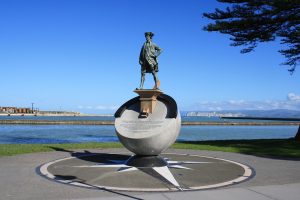
Captain James Cook, the English explorer, became the first European to discover Hawaii islands on January 18, 1778. Cook was a captain in the Royal Navy, as well as navigator, explorer, and cartographer. Captain Cook’s created detailed maps of Canadian island Newfoundland. Moreover, he went on three trips to the Pacific Ocean, discovered the eastern coastline of Australia and Hawaii. Captain Cook also traveled around New Zealand.
Captain James Cook was sailing past the island of Oahu with his crew. Then he came across the eastern coastline of Hawaiian Islands. After two days of sailing, Cook landed at the island of Kauai. Captain Cook also came up with the name for the island group he discovered. Cook called Hawaii the Sandwich Islands in honor of one of his patrons, the earl of Sandwich.
Before he discovered Hawaii, Captain James Cook was a lieutenant on a Royal Navy ship Endeavor. It was back in 1768. Together with his crew, Cook was mapping the course of planet Venus. Traveling for the following three years, Cook has explored New Zealand and Australia. Furthermore, he went with his crew around the globe.
Hawaiians welcomed Cook and his crew. They found the captain’s ships and Europeans’ use of iron intriguing. Englishmen began trading with Hawaiians. Captain Cook and his crew traded metal and iron nails. Consequently, they managed to maintain provisions on the ship. However, neither Cook nor his crew stayed in Kauai for long. After leaving the place, the explorers continued north. They wanted to find the end of the northwestern passage between North Atlantic and Pacific oceans. After one more year of sailing, Cook’s ships returned to Hawaii and docked in the safety of Kealakekua Bay.
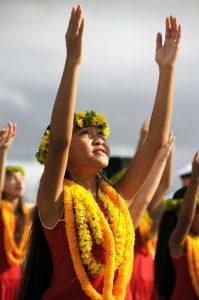
Captain’s ships landed in Hawaii for the second time. Englishmen believed that the local population associates their arrival with some religious symbolism. Cook and his crew arrived at the time of the Makahiki festival. The Makahiki was dedicated to the Hawaiian god of fertility, Lono. Locals saw it as a sign and welcomed and treated them as gods. Englishmen shamelessly abused the hospitality of Hawaiians. However, when one of the crew members passed away, locals realized they were people just like them. This changed the relationships between the two. In the beginning of 1779, Cook wanted to return to England, but one of his ships were damaged during the storm and they had to return to Hawaii.
When Englishmen came back, the Makahiki had ended and nobody was happy to see them. Hawaiians threw rocks at them and stole an item from their ship. While Cook tried to negotiate with the Hawaiian King to return the item, the King was murdered. Locals gathered and attacked Cook and his crew. Many men were killed, including Captain Cook. Once Englishmen went back to the ship, they fired cannons at the locals, killing some of them. Eventually, the ships returned to England.
The discovery of Hawaii by Captain James Cook is an important event in history. However, the discovery was tainted because of how Englishmen tried to exploit Hawaiians.

How do you like your coffee in the morning? Espresso or decaf? With milk or black? These are just some of the decisions you take when you decide to grab a cup of coffee. But did you know there are more than a hundred different species of coffee growing in the world? Have you tried all of them? Most likely not. But, certainly, you have tried the two main types of coffee beans: Coffee Arabica and Coffee Robusta. Did you know that these two species are the most cultivated among the coffee beans? Many people do not question the type of bean that goes in their coffee, but it is good to know about them. What is the difference between types of coffee? Let’s find out.
First difference between the two main types of beans is in their cultivation. Arabica plants usually grow about 4.5 meter tall, while Robusta plants can reach 6 meters. Arabica is more expensive than Robusta because it is more difficult to cultivate. The latter is easier to grow and more resistant to insects. However, the most popular of the two remains Arabica. About 75% of the coffee production goes to Arabica beans, leaving only 25% to Robusta. Arabica beans are oval in shape, while Robusta beans are rather round.
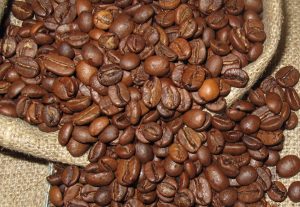
The two main types of beans differ in the amount of antioxidants, caffeine, sugar, and other compounds. For example, the caffeine content is different, with 2.7% caffeine in Robusta and 1.5% in Arabica. Moreover, Arabica beans have 60% more lipids and natural sugars compared to Robusta. In addition, the antioxidant Chlorogenic acid content is 10% in Robusta, with 8% in Arabica. Robusta beans is richer in caffeine, antioxidants, and other chemical compounds. However, Arabica is still the most popular. Why?
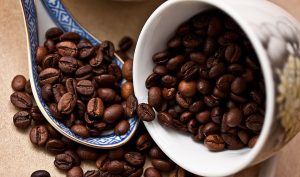
It is no surprise that Coffee Arabica takes the leading place among the coffee species. The majority of people in the world believe that Robusta does not taste good. Robusta beans have more caffeine and less sugars, which gives them a bitter taste. Arabica beans have a unique fruity and sweet flavor compared to Robusta. This is why people from all over the world enjoy drinking it. Even among Arabica beans, there is a difference between types of coffee, the final product. Every coffee bean brings a unique flavor to the table.
There are so many different Arabica flavors based on the region of cultivation. Consequently, depending on where the coffee is grown, even the popular Arabica type of beans can gain a richer and deeper flavor. The flavors in the beans depend on several factors, including soil, weather, and temperature. A few examples of different varieties of Arabica beans are Columbian, Java, Sumatran, Kenyan, and Hawaiian Kona. Kona Coffee from Kona region on the Big Island of Hawaii trumps other Arabica beans because of the rich volcanic soil and climate near Kona Mountains. Experience the rich and exquisite flavor of 100% Kona Coffee with our FREE shipping options!

Since the quality of coffee begins to decline after roasting, many coffee drinkers consider roasting their own coffee at home. Ordinarily, when you roast coffee yourself, you know when it is fresh. Moreover, you control the level of roasting and can achieve the perfect cup at the end. While coffee is green, its quality will not drop for up to one year counting from the arrival date. However, to roast coffee at home, you need a purpose built roasting machine. So, what is the best coffee roaster for home?
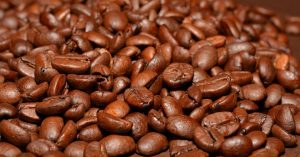
Generally, you cannot say that a particular machine is the best coffee roaster. There are many options that you should consider and make a decision based on your preferences. When you choose a roaster, think about your budget, your desired roast, and the amount of coffee you normally drink.
First, if you like dark roasts, choose Gene Cafe or air roaster because they work better with dark roasts. Second, depending on the machine, you will be working with 4-12 oz. batches. Usually, 4 oz. of green coffee will result in 26-42 oz. of brewed coffee (depending on how strong you make your coffee). A Gene Cafe or a HotTop will make twice more coffee, while a Behmor 1600 will make up to a full pound of light roast. So, if you drink a lot of coffee, you should consider a larger drum roaster instead of an air roaster. Lastly, drum roasters are much more expensive compared to air roasters so plan accordingly.
Air roasters use hot air for moving and roasting coffee. Examples of those are Nesco and Fresh Roast. Usually, air roast takes about 8-12 minutes. If the roast stays less, the flavor might not develop completely. If the roast stays too long, the flavor might dull. Drum roasters are larger in size and they move the beans using a rotating drum. Examples of those machines are Behmor 1600, Gene Cafe and HotTop. It takes longer to roast the coffee using those, about 14-20 minutes. While air roasters make coffee brighter, drum roasters tend to develop the flavor better.
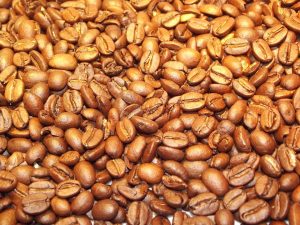
The longevity of the roaster depends on the regularity of use and maintenance. Small roasters normally last around two years. They might last longer if you use them less often, clean them regularly and make lighter roasts. However, if you use the roaster a lot, do not clean it, and make dark roasts, the machine can have a shorter lifespan. If you choose a drum roast, you have an option to replace parts instead of replacing the whole unit. This saves you money in the long run.
Smaller machines like Nesco or Fresh Roast do a great job roasting coffee beans. Fresh Roast is good for beginners, affordable and small, which makes it perfect for those who do not drink a lot of coffee. Nesco is bigger and has a feature for smoke reduction, which is great if you do not have good ventilation. It is tricky if you buy a large machine without knowing how to use it, but it is also tricky to buy a machine that will not produce enough coffee.
If you do drink a lot of coffee or if you already know some things about roasting, going with a larger drum machine is a good choice. Such roasters as HotTop, Gene Cafe, and Behmor allow you to control time and temperature. A lot of these machines now include programming features which help you tailor the roast to the coffee beans. All things considered, choose a roaster depending on your needs. Think about your budget, the amount of coffee you drink, and the desired roast.